Local web development environments are often the best option when working on a new website. MAMP is one of the most popular web development solutions, but it’s not for everyone. Fortunately, there are plenty of MAMP alternatives that you can use.
A local environment helps you set up your site on your local device until it’s ready to move to a web host. Some local development tools also provide you with powerful features, such as setting up multiple local sites and pushing those projects to production.
In this article, we’ll take a closer look at MAMP, gauge its pros and cons, and then list our top eight recommended MAMP alternatives.
Let’s get started!
What Is MAMP?

MAMP stands for macOS, Apache, MySQL/MariaDB, and PHP, Perl, or Python. If you’ve worked in web development before, you’ll recognize that combination of software as a “stack.” MAMP takes all those components and sets up the full-stack on either Windows or macOS. That way, you have access to the web development software that you need to launch new projects locally.
On top of setting up a full-stack for you, MAMP offers an interface that enables you to interact with each component without needing to use the command line:
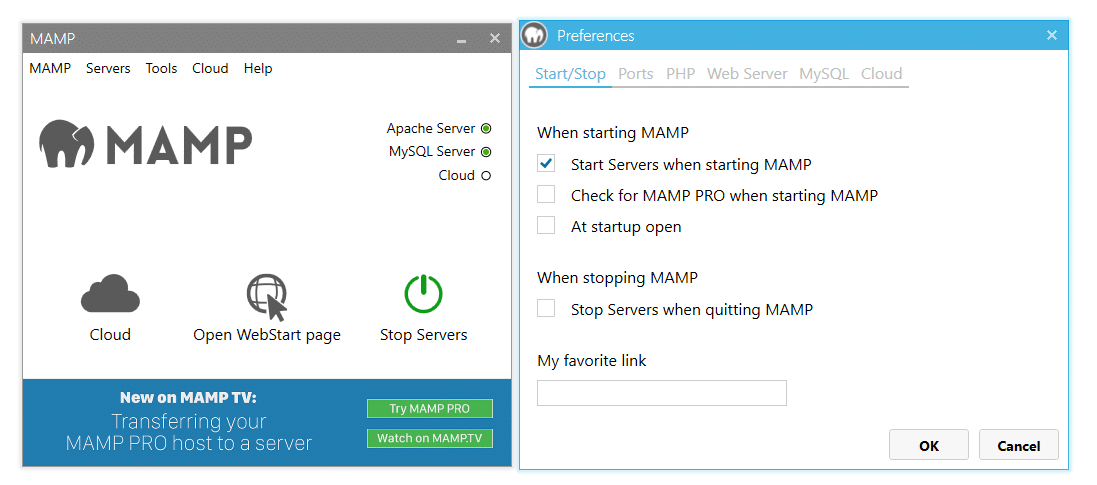
That interface makes it easy to configure your web stack depending on what type of project you’re working on. Plus, you can launch or stop your MAMP server with only a few clicks at any time.
Pros and Cons of MAMP (and When to Consider an Alternative)
MAMP is a fantastic tool for working on simple web development projects. However, the software is not without limitations or bugs. There are four significant downsides to using MAMP:
- Launching multiple local projects is complicated. By and large, MAMP isn’t optimized to help you launch numerous local projects. For example, setting up multiple local WordPress websites using MAMP requires several workarounds.
- You use the same software stack for multiple projects. Unlike other local web development tools, you share the same software stack for each project. That means you can’t set up unique configurations for each local website.
- There’s no compartmentalization between local projects. Every MAMP website shares the same server and resources. Other local web development tools enable virtualization to compartmentalize your projects.
- You can’t modify the MAMP software stack. The stack you see is the stack that you get. If you want access to other web development software, you’ll need to set it up manually, and you won’t be able to configure it using the MAMP control panel.
Putting all of those downsides aside, MAMP is a good option if you plan on working on a single WordPress local development project. The MAMP stack includes all of the components that WordPress needs, including the webserver, database, and PHP. In practice, you can use MAMP to launch a WordPress website in a matter of minutes.
Likewise, if you’re not comfortable using the command line, MAMP makes it easy to administrate every component of its software stack through its control panel. However, the control panel itself is pretty limited. If you need to change any configurations that aren’t included in the panel, you’re out of luck.
With that in mind, there are plenty of MAMP alternatives that offer both more control over your local web development projects and easy-to-use interfaces. If this is something that you’re interested in, then you may want to check out a few different options. In the next section, we’ll share our top picks with you.
8 Top MAMP Alternatives
In this section, we’ll introduce you to other software options that can do everything that MAMP does and, in many cases, a lot more. We’ll cover local web development tools that focus on WordPress and other options that work for all kinds of local projects. Let’s get to it!
1. DevKinsta

DevKinsta is our own local WordPress web development software. The program enables you to set up multiple WordPress websites using virtualization. With Kinsta, every website that you set up uses its own instance of Nginx, PHP, and MySQL.
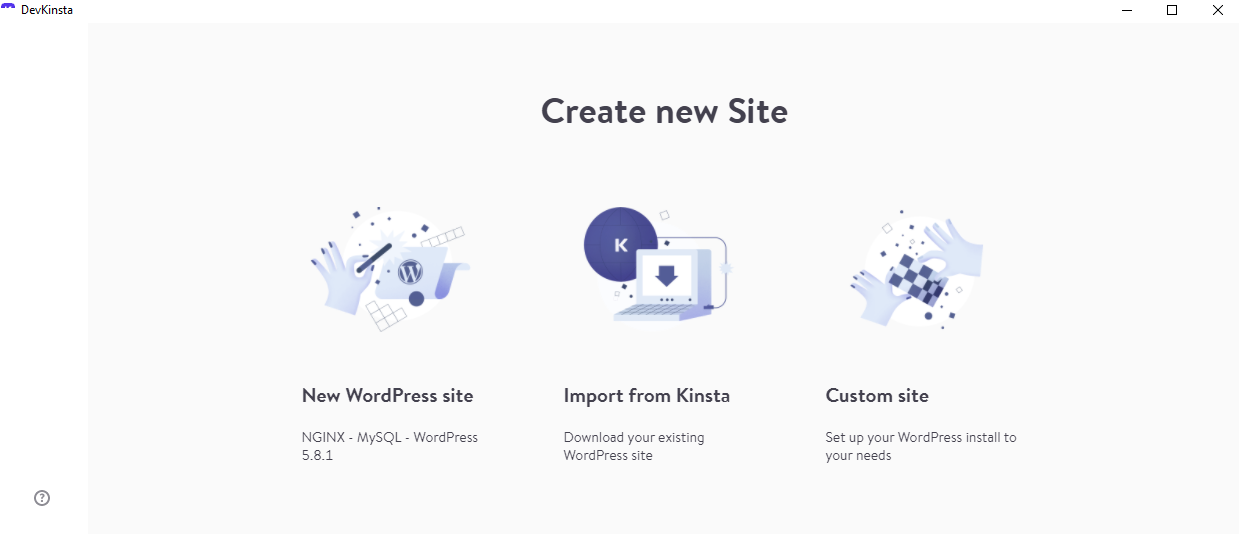
The software automatically sets up HTTPS for every new WordPress website and logs any errors. You can monitor emails for every site and access their databases using Adminer, an open-source database management tool.
If you’re a Kinsta user, you’ll be happy to know that DevKinsta enables you to push websites to staging with a click. This means you can work on projects locally, push them to staging, and then to production without manually copying files. Moreover, DevKinsta can import copies of your Kinsta sites so you can work on them locally.
Price: DevKinsta is 100 percent free even if you’re not a Kinsta user.
2. WampServer
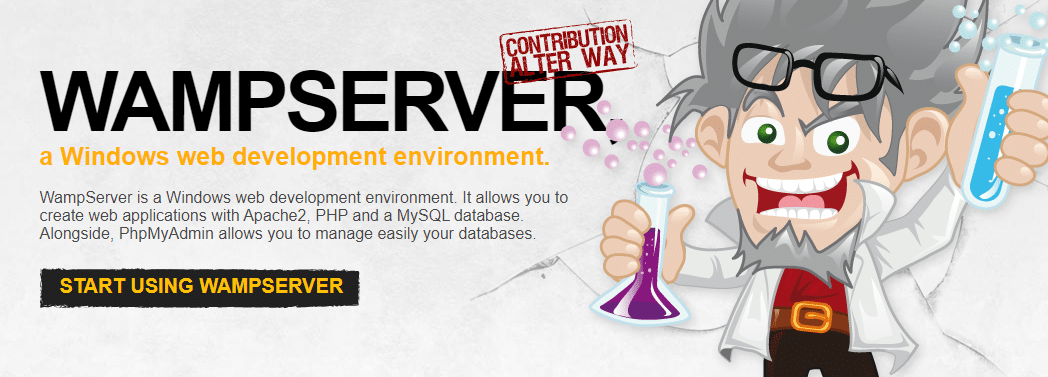
WampServer is relatively similar to MAMP in terms of features. The primary difference is that you get access to a more compact stack. WampServer supports Apache, PHP, and MySQL, and it runs on Windows.
Instead of using a full control panel, you primarily interact with WampServer using a simple menu that enables you to access its PHP and database management tools. You can also stop and restart services at will.
Ultimately, WampServer is a lightweight local web development tool perfect for single local projects. If you want to test a local WordPress setup, WampServer provides you with all of the software you need to set up the Content Management System (CMS) without any issues.
Price: WampServer is an open-source project.
3. XAMPP
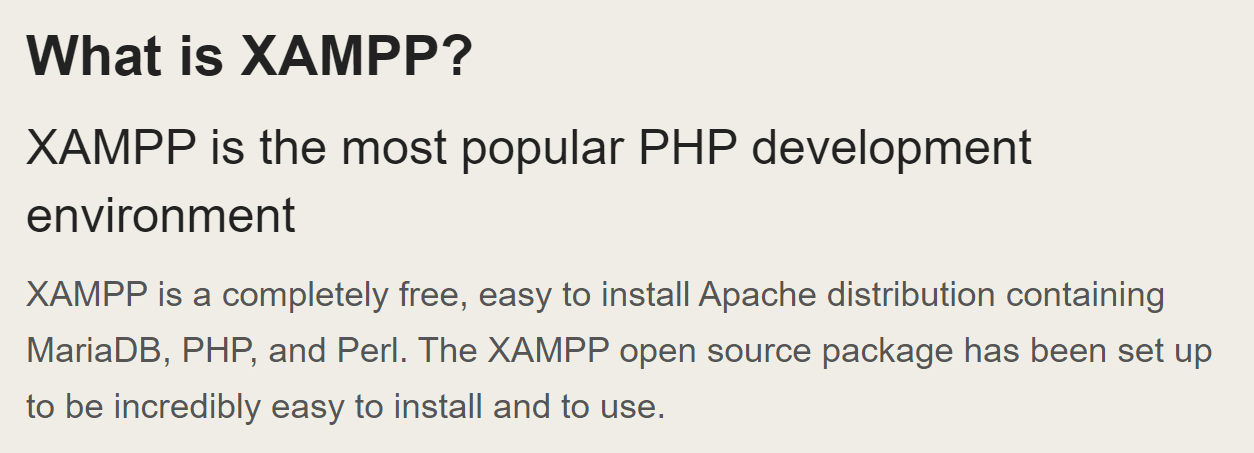
XAMPP is an open-source project that contains MariaDB, Perl, PHP, and Apache. It’s available for Windows, macOS, and Linux distributions. One standout aspect of XAMPP is that it enables you to choose which components of its stack you want during the setup process.
On top of web development software, XAMPP also comes with FTP and mail servers. That means you can set up local websites with XAMPP, connect to them via FTP, and send and receive emails.
Compared to MAMP or WampServer, the XAMPP control panel provides you with far more options to manage your local development setup. You get access to a broad range of configuration options and administrative controls for each software component. XAMPP also provides you with in-depth logs so you can track every change to the environment.
Overall, XAMPP’s feature set makes it a perfect option for local WordPress theme and plugin development. Its logs are also a great asset if you’re trying to troubleshoot local web projects.
Price: XAMPP is an open-source project.
4. DesktopServer
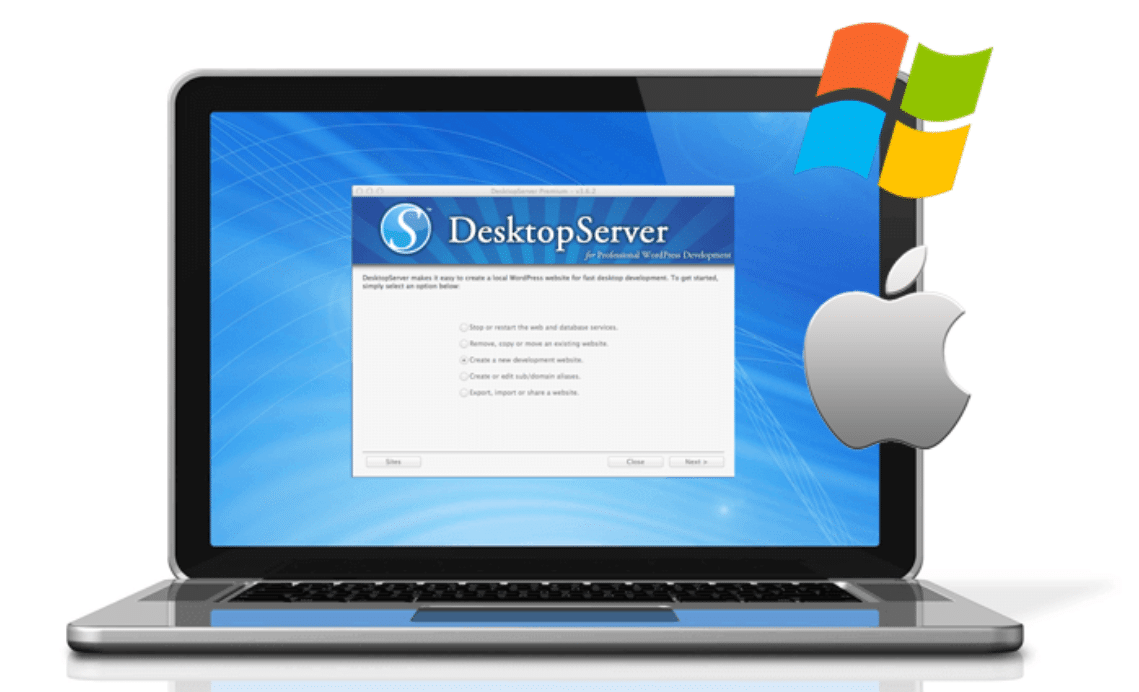
DesktopServer has the distinction of being perhaps the oldest local WordPress development tool with a visual interface. The software enables you to set up multiple local WordPress websites using a step-by-step wizard (just like DevKinsta). However, you’ll still need to run the five-minute WordPress installer to complete the setup process.
The biggest downside of using DesktopServer is that you’re limited to three WordPress websites with their free version. DesktopServer’s premium version packs a lot of features that make local web development a lot easier. Among those features, you have WP-CLI support, the ability to set up multiple WordPress websites, the option to store website blueprints, and multisite support.
All in all, DesktopServer is reasonably easy to use if you’re not comfortable configuring individual parts of a local WordPress development stack. However, if you’re planning on running more than one website, you need to consider DesktopServer’s premium version.
Price: DesktopServer is available for free and premium licenses start at $99.95.
5. EasyPHP
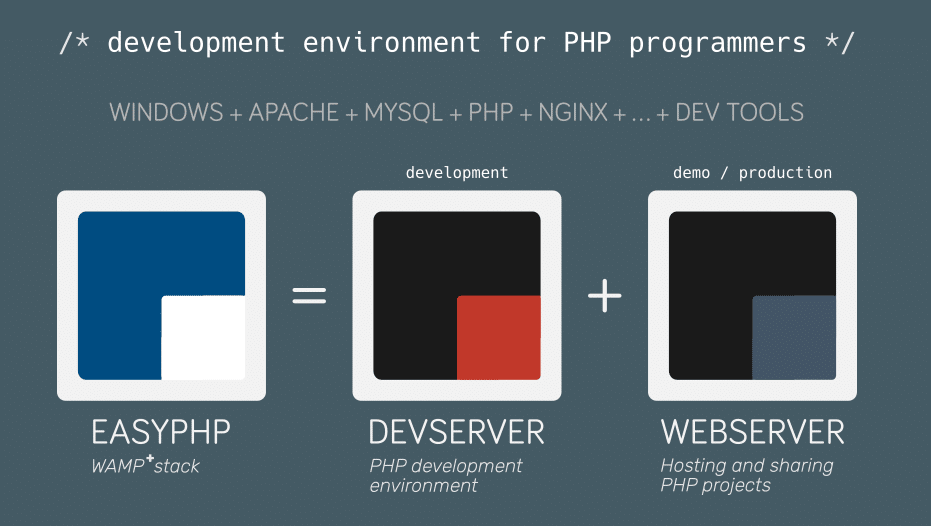
So far, we’ve focused primarily on tools that you can use even if you don’t have a web development background. However, EasyPHP is a little different. This is a MAMP alternative that’s geared towards PHP enthusiasts and developers.
With this software, you get a stack that includes Apache, MySQL, PHP, and Nginx, all in a package available for Windows only. EasyPHP also consists of web development tools, including Xdebug, PhpMyAdmin, and more.
The software also offers the option to install modules that expand its functionality, such as support for Laravel, mobile testing add-ons, and a PHP code sniffer. If you’re serious about WordPress development in a Windows environment, you can consider this local development option.
Price: EasyPHP is open-source software.
6. AMPPS
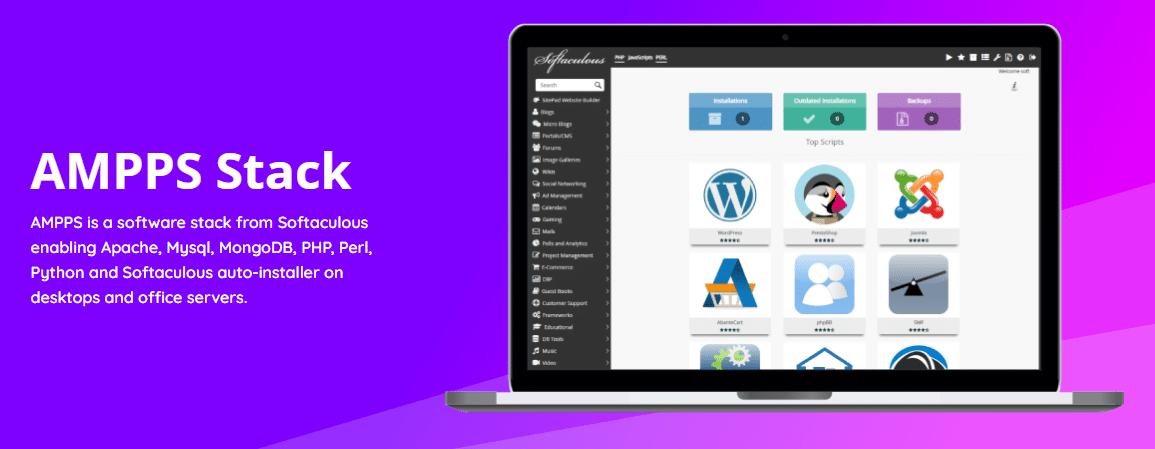
If you’ve ever used a web host that offers a cPanel, then you’re probably familiar with Softaculous. This software enables you to install other software and CMSs on your web server. It provides one of the easiest ways to install WordPress (if you don’t want to manually), which is perfect if you’re getting to know the platform.
AMPSS stands for Apache, MySQL, MongoDB, PHP, Perl, Python, and Softaculous. Out of all local development tools, this is the one that offers the broadest range of self-installing CMSs and apps. You also get complete control over your PHP and Apache installations. The software enables you to switch between different PHP versions for your apps with only a few clicks.
The free version of AMPSS doesn’t limit the number of local websites that you can set up. However, that version doesn’t come with AMPPS’ built-in WordPress manager tool. This feature helps you manage multiple WordPress websites using a panel that’s very similar to a multisite setup.
Price: AMPSS is free, and premium versions with the WordPress manager tool start at $49 per year.
7. Zend Server

Out of all the MAMP alternatives we’ve discussed, Zend Server is the only option we’d classify as an “enterprise” solution. As the name implies, Zend Server enables you to set up a local webserver. It supports multiple options, including Apache, IIS, and Nginx. However, where the software shines is when it comes to PHP integration.
With Zend Server, you access over 75 unique plugins for different CMSs (including WordPress) and other software. These plugins enable you to set up applications locally or integrate Zend Server with third-party services such as Amazon Web Services (AWS).
One of Zend Server’s main selling points is getting automatic PHP updates and patches. The software includes powerful debugging and speed optimization tools, application monitoring functionality, and data caching options.
If you plan on using local development software for client projects, Zend Server is an option worth considering. However, Zend Server is also the only MAMP alternative on this list that doesn’t offer an entirely free version. Plus, it’s only available for Windows and Linux distributions.
Price: Zend Server offers a 30-day free trial, and licenses start at $250 per year.
8. Vagrant

Vagrant is unlike any other MAMP alternative on this list in that it doesn’t enable you to set up a pre-determined local software development stack. At its core, Vagrant is a virtualization tool that allows you to launch as many machines as you need with very little overhead. Depending on each project’s needs, you can assign a specific amount of hardware resources to each machine.
Since we’re talking about a virtualization tool, the Vagrant machine can have its environment. You interact with devices through the command line only, and you get complete control over what software stack you want to set up and its configuration.
With Vagrant, you get access to a massive library of “boxes,” which are pre-built environments that you can deploy with only a few commands. There are a lot of fantastic Vagrant boxes for WordPress developers, like Seravo.
Vagrant is a fantastic tool for running as many local virtual machines as you need, each with its WordPress setup if you’re comfortable using the command line. Moreover, you can easily share Vagrant machines with other users, making it easy to replicate the same work environment on different computers. Plus, it’s available for all major OSs, including Windows, macOS, and Linux.
Price: Vagrant is open-source software.
Summary
MAMP is a fantastic tool for local WordPress development. However, there’s a whole world of MAMP alternatives out there, many of which offer a much broader set of development options and give you far more control over your environment.
If you’re fully committed to WordPress projects, our own DevKinsta tool offers the most user-friendly interface that you can use to launch as many local websites as you need. For a more versatile local web development experience, you may want to consider Vagrant. With this software, you can launch as many local virtual machines as you need for absolutely any type of development project.
Ready to take your development projects live? Kinsta is your best bet. We offer assisted migrations and a 30-day-money back guarantee. Check out our plans or talk to one of our sales representatives to find the ideal plan for your needs.


